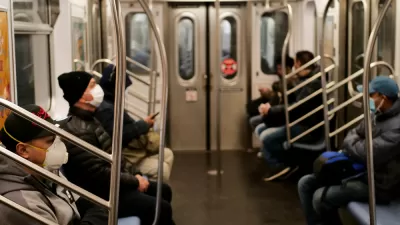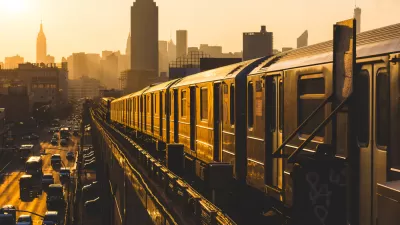The transit crisis continues.

“New York City bus riders are in for more pain as Metropolitan Transportation Authority officials [in August] quietly cut service across the five boroughs,” reports Clayton Guse in a paywalled article for the New York Daily News.
The changes are intended to address the transit agency’s ongoing fiscal crisis, according to the article. MTA officials in July admitted that federal relief funds expected to last the agency through 2025 are running out faster than expected as ridership continues to stay beloe pre-pandemic levels.
Guse’s reporting is sourced from an internal email leaked to the publication, so there is some question about the reasoning behind the service cuts.
“An MTA spokesman denied the email’s assertion that not filling some bus driver shifts is meant to save money and cut service, and instead stated that the agency is trying to make sure it isn’t paying drivers when they are not needed,” writes Guse.
Regardless of the reasoning, a lack of operators is continuing to impact service levels on New York buses, just like in less transit-dependent cities around the country.
“The MTA has for more than two years struggled to put out full bus service due to a shortage of drivers. A hiring freeze put in place during the first year of the pandemic decimated the agency’s headcounts,” explains Guse.
FULL STORY: MTA quietly cuts bus service across NYC as ‘money saving initiative,’ manager says in email

Alabama: Trump Terminates Settlements for Black Communities Harmed By Raw Sewage
Trump deemed the landmark civil rights agreement “illegal DEI and environmental justice policy.”

Study: Maui’s Plan to Convert Vacation Rentals to Long-Term Housing Could Cause Nearly $1 Billion Economic Loss
The plan would reduce visitor accommodation by 25% resulting in 1,900 jobs lost.

Why Should We Subsidize Public Transportation?
Many public transit agencies face financial stress due to rising costs, declining fare revenue, and declining subsidies. Transit advocates must provide a strong business case for increasing public transit funding.

Wind Energy on the Rise Despite Federal Policy Reversal
The Trump administration is revoking federal support for renewable energy, but demand for new projects continues unabated.

Passengers Flock to Caltrain After Electrification
The new electric trains are running faster and more reliably, leading to strong ridership growth on the Bay Area rail system.

Texas Churches Rally Behind ‘Yes in God’s Back Yard’ Legislation
Religious leaders want the state to reduce zoning regulations to streamline leasing church-owned land to housing developers.
Urban Design for Planners 1: Software Tools
This six-course series explores essential urban design concepts using open source software and equips planners with the tools they need to participate fully in the urban design process.
Planning for Universal Design
Learn the tools for implementing Universal Design in planning regulations.
Caltrans
Smith Gee Studio
Institute for Housing and Urban Development Studies (IHS)
City of Grandview
Harvard GSD Executive Education
Toledo-Lucas County Plan Commissions
Salt Lake City
NYU Wagner Graduate School of Public Service





























